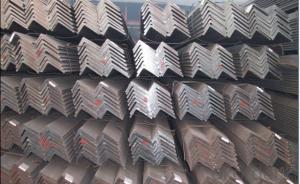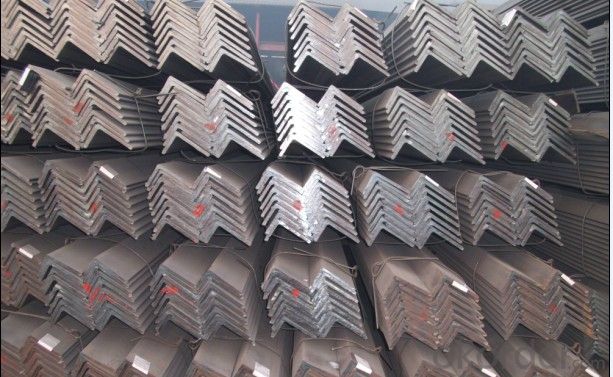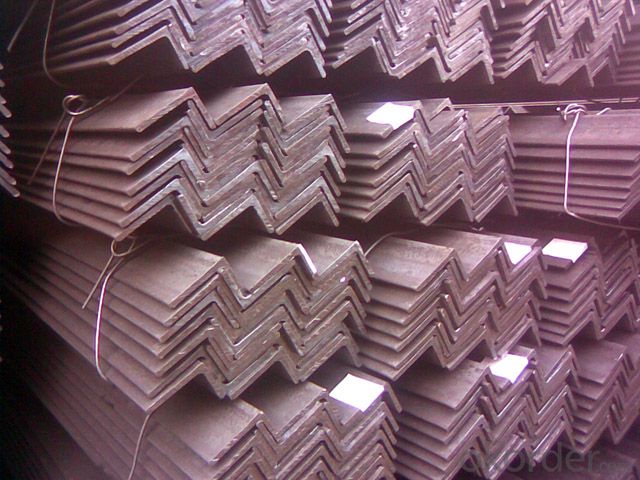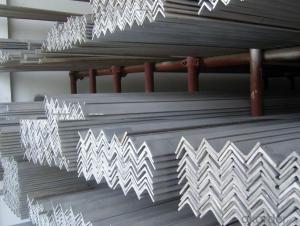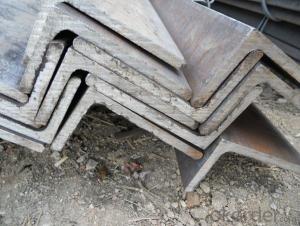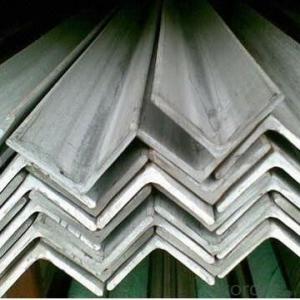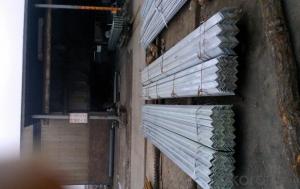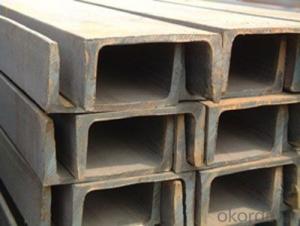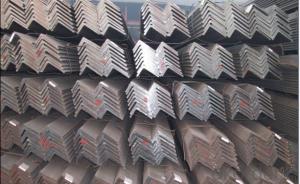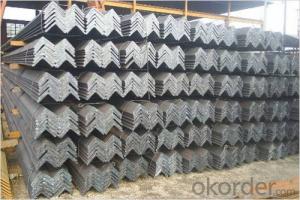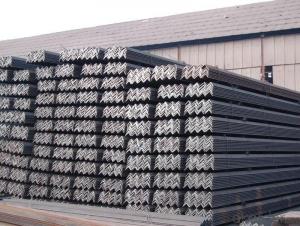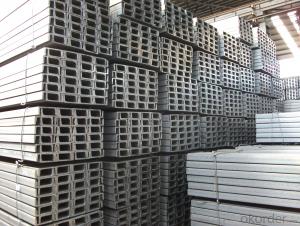Unequal Angle Steel HR Q235-420Series, SS400-540Series, S235JR-S355JR, A36-A992
- Loading Port:
- Tianjin
- Payment Terms:
- TT or LC
- Min Order Qty:
- 30 m.t.
- Supply Capability:
- 38000 m.t./month
OKorder Service Pledge
OKorder Financial Service
You Might Also Like
Product Description:
OKorder is offeringUnequal Angle Steel HR Q235-420Series, SS400-540Series, S235JR-S355JR, A36-A992at great prices with worldwide shipping. Our supplier is a world-class manufacturer of steel, with our products utilized the world over. OKorder annually supplies products to European, North American and Asian markets. We provide quotations within 24 hours of receiving an inquiry and guarantee competitive prices.
Product Applications:
Unequal Angle Steel HR Q235-420Series, SS400-540Series, S235JR-S355JR, A36-A992 are ideal for structural applications and are widely used in the construction of buildings and bridges, and the manufacturing, petrochemical, and transportation industries.
Product Advantages:
OKorder'sUnequal Angle Steel HR Q235-420Series, SS400-540Series, S235JR-S355JR, A36-A992are durable, strong, and resist corrosion.
Main Product Features:
· Premium quality
· Prompt delivery & seaworthy packing (30 days after receiving deposit)
· Corrosion resistance
· Can be recycled and reused
· Mill test certification
· Professional Service
· Competitive pricing
Packaging & Delivery:
Packaging Detail: products are packed in bundle and then shipped by container or bulk vessel, deformed bar is usually naked strapping delivery, when storing, please pay attention to moisture proof. The performance of rust will produce adverse effect.
Each bundle weight: 2-3MT, or as required
Payment term: TT or L/C
Delivery Detail: within 45 days after received advanced payment or LC.
Label: to be specified by customer, generally, each bundle has 1-2 labels
Trade terms: FOB, CFR, CIF
FAQ:
Q1: Why buy Materials & Equipment from OKorder.com?
A1: All products offered byOKorder.com are carefully selected from China's most reliable manufacturing enterprises. Through its ISO certifications, OKorder.com adheres to the highest standards and a commitment to supply chain safety and customer satisfaction.
Q2: How do we guarantee the quality of our products?
A2: We have established an advanced quality management system which conducts strict quality tests at every step, from raw materials to the final product. At the same time, we provide extensive follow-up service assurances as required.
Q3: How soon can we receive the product after purchase?
A3: Within three days of placing an order, we will begin production. The specific shipping date is dependent upon international and government factors, but is typically 7 to 10 workdays.
Images:
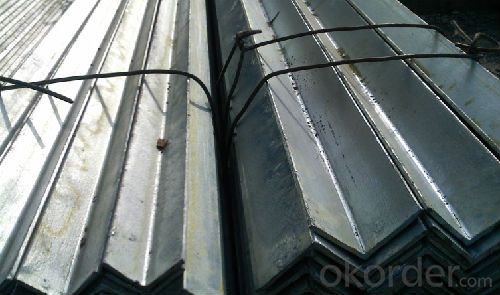
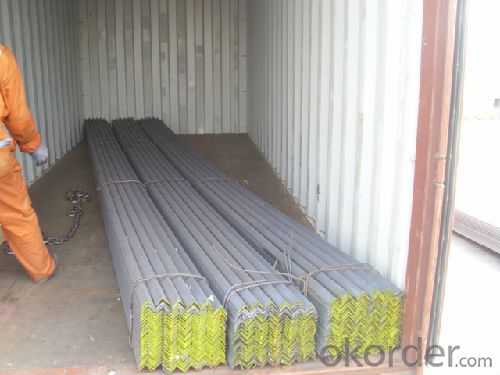
- Q: What are the welding techniques used for steel angles?
- Different welding techniques can be used for steel angles, depending on the specific application and desired result. Some commonly used techniques include: 1. Stick welding, also known as Shielded Metal Arc Welding (SMAW), involves using a consumable electrode coated in flux. It is versatile, cost-effective, and suitable for various thicknesses of steel angles. 2. Gas Metal Arc Welding (GMAW), also known as MIG (Metal Inert Gas) welding, utilizes a welding gun to feed a wire electrode. The wire melts and joins with the base metal, while an inert gas shield protects the weld from contamination. GMAW is commonly used for thin to medium thickness steel angles. 3. Flux-Cored Arc Welding (FCAW) is similar to GMAW, but the wire electrode is filled with flux, eliminating the need for external shielding gas. FCAW is suitable for both indoor and outdoor applications and is known for its high deposition rates. 4. Tungsten Inert Gas Welding (GTAW), also known as Gas Tungsten Arc Welding (GTAW), involves using a non-consumable tungsten electrode and a separate filler metal if necessary. This technique produces precise, high-quality welds and is commonly used for thinner steel angles or when precise control is required. 5. Submerged Arc Welding (SAW) uses a continuously fed wire electrode submerged in a granular flux. The flux acts as a protective layer, preventing contamination and enhancing weld quality. SAW is commonly used for thicker steel angles or when high deposition rates are needed. When selecting the appropriate welding technique, it is important to consider factors such as the thickness of the steel angles, the welding environment, and the desired quality and strength of the weld. Consulting with a professional welder or engineer can help determine the best technique for a specific application.
- Q: How do you design connections for steel angles to concrete?
- When designing connections for steel angles to concrete, there are several factors to consider to ensure a safe and efficient design. Here are some key steps and considerations: 1. Determine the loads: Start by identifying the type and magnitude of the loads that the connection will be subjected to. This includes the applied forces, moments, and shear forces. Consider both the dead loads and live loads that will act on the connection. 2. Select the appropriate angle size: Based on the loads, select an angle size that can safely resist the applied forces. Ensure that the selected angle has adequate strength and stiffness for the specific application. 3. Determine the embedment depth: The angle needs to be embedded into the concrete to ensure a secure connection. Calculate the required embedment depth based on the loads and the concrete's compressive strength. Generally, a minimum embedment depth of three times the angle's thickness is recommended. 4. Design anchor bolts: Anchor bolts are typically used to secure the angle to the concrete. Determine the number, spacing, and diameter of anchor bolts based on the applied loads and the desired level of safety. Consider the concrete's strength and thickness when selecting suitable anchor bolts. 5. Provide edge distance and spacing: Ensure that the anchor bolts are positioned with sufficient edge distance and spacing to prevent concrete failure. The edge distance refers to the distance between the center of the bolt and the edge of the concrete, while the spacing is the distance between the centers of adjacent bolts. 6. Consider corrosion protection: If the connection will be exposed to corrosive environments or water exposure, take appropriate measures to protect against corrosion. This can include using galvanized or stainless steel angles and anchor bolts, as well as applying protective coatings. 7. Verify connection capacity: Once the connection design is complete, verify its capacity by conducting a structural analysis or using appropriate design codes and guidelines. Ensure that the connection can safely resist the applied loads without failure or excessive deformation. 8. Detail the connection: Provide clear and detailed drawings and specifications for the connection, including the dimensions, anchor bolt layout, and any additional reinforcement requirements. Ensure that the connection is properly communicated to the fabricator and contractor for accurate implementation. By following these steps and considering the various factors mentioned, you can effectively design connections for steel angles to concrete that meet the required strength, safety, and durability criteria. It is important to consult relevant design codes, standards, and professional engineers to ensure compliance with local regulations and best practices.
- Q: How to determine the neutral axis of the angle bar?
- For the bolt group, the calculation of the location of the neutral axis is more complex, and is usually approximately assumed on the bottom row of the bolt axis.
- Q: How do steel angles perform in extreme temperatures?
- Steel angles perform well in extreme temperatures due to their high strength and excellent heat resistance. They retain their structural integrity and do not easily deform or become brittle under extreme heat or cold conditions. This makes steel angles a reliable choice for various applications in industries such as construction, manufacturing, and engineering, where exposure to extreme temperatures is common.
- Q: How do you clean steel angles?
- To clean steel angles, you can start by removing any loose dirt or debris with a soft brush or cloth. Then, mix a solution of mild detergent and warm water and use a sponge or cloth to gently scrub the surface. Rinse the angles thoroughly with clean water and dry them with a clean cloth to prevent any water spots or rusting.
- Q: What is the standard length of a steel angle?
- The standard length of a steel angle can vary depending on the specific requirements and standards set by the industry or project. However, in general, steel angles are commonly available in standard lengths of 20 feet or 6 meters. These standard lengths are often used for easy transportation, handling, and installation purposes. However, it is important to note that custom lengths can also be produced to meet specific project needs.
- Q: How much is the weight of 40 * 3 angle steel theory?
- Angle called angle, the steel strip is perpendicular to each other on both sides into the corner. There are equal angles and unequal angles. The two sides of an equal angle steel are equal in width. The specifications are expressed in millimeters of edge width * edge width * edge thickness. Such as "/ 30 x 30 x 3", that is 30 mm width equal angle, edge thickness of 3 mm.
- Q: Can steel angles be used for electrical conduits?
- Steel angles cannot serve as electrical conduits. Electrical conduits are commonly made from non-metallic materials like PVC or metal materials such as galvanized steel or aluminum. Steel angles, on the other hand, are utilized for structural support and reinforcement in construction endeavors, but they are not intended or appropriate for use as electrical conduits. Electrical conduits have specific insulation, protection, and grounding requirements that steel angles do not fulfill. To ensure the integrity and efficiency of electrical installations, it is crucial to employ appropriate electrical conduits that satisfy the necessary safety standards.
- Q: Can steel angles be galvanized or coated for corrosion resistance?
- Steel angles have the capability to undergo galvanization or coating in order to achieve corrosion resistance. Galvanization is a widely utilized technique for safeguarding steel against corrosion, wherein a layer of zinc is applied to the surface. This method establishes a barrier between the steel and its surroundings, effectively preventing the formation of rust. Alternatively, steel angles can be coated with materials that possess corrosion-resistant properties, such as epoxy or powder coatings. These coatings serve as a protective shield, preventing moisture and other corrosive substances from reaching the steel surface. By employing galvanization or coatings, the lifespan of steel angles can be significantly extended, allowing them to maintain their structural integrity even in highly corrosive environments.
- Q: How do you store and handle steel angles?
- To ensure the safety and preservation of steel angles, it is important to adhere to certain steps. Below is a comprehensive guide on the proper storage and handling of steel angles: 1. Choosing a storage location: Locate a dry, well-ventilated area that is devoid of corrosive substances. Ideally, an indoor space should be chosen to shield the steel angles from harsh weather conditions like rain, snow, and excessive humidity. 2. Organizing the angles: Arrange the steel angles in a manner that ensures easy access and prevents unnecessary contact or rubbing against each other. Vertical stacking or the use of suitable racks, pallets, or storage bins is recommended to maintain order and prevent bending or warping. 3. Assessing weight capacity: Make sure that the storage area can withstand the weight of the steel angles, as they can be quite heavy. Considering the load-bearing capacity of storage racks or shelves is crucial to avoid accidents or collapses. 4. Using lifting equipment: Employ appropriate lifting equipment such as cranes, forklifts, or hoists to handle steel angles. Never attempt to manually lift or carry them, as this can be hazardous and lead to injury. 5. Implementing protective measures: Safeguard the steel angles from scratches or damage during handling by employing suitable covers, pads, or straps. Avoid dragging or sliding them on the ground to prevent surface harm. 6. Preventing corrosion: Prior to storage, apply a proper protective coating or paint to the steel angles to prevent corrosion. Additionally, conduct periodic inspections of the storage area to identify any signs of moisture or water leakage that could result in rusting. 7. Following handling guidelines: Adhere to proper lifting techniques when moving steel angles to avoid strain or injury. Ensure that the angles are firmly secured or tied down during transportation to prevent shifting or falling. 8. Regular maintenance: Consistently inspect the storage area, racks, and steel angles for any signs of damage, corrosion, or structural weakness. Promptly address any issues to maintain their integrity and safety. By adhering to these guidelines, you can safely store and handle steel angles, reducing the risk of damage or accidents while preserving their durability and utility.
Send your message to us
Unequal Angle Steel HR Q235-420Series, SS400-540Series, S235JR-S355JR, A36-A992
- Loading Port:
- Tianjin
- Payment Terms:
- TT or LC
- Min Order Qty:
- 30 m.t.
- Supply Capability:
- 38000 m.t./month
OKorder Service Pledge
OKorder Financial Service
Similar products
Hot products
Hot Searches
Related keywords
